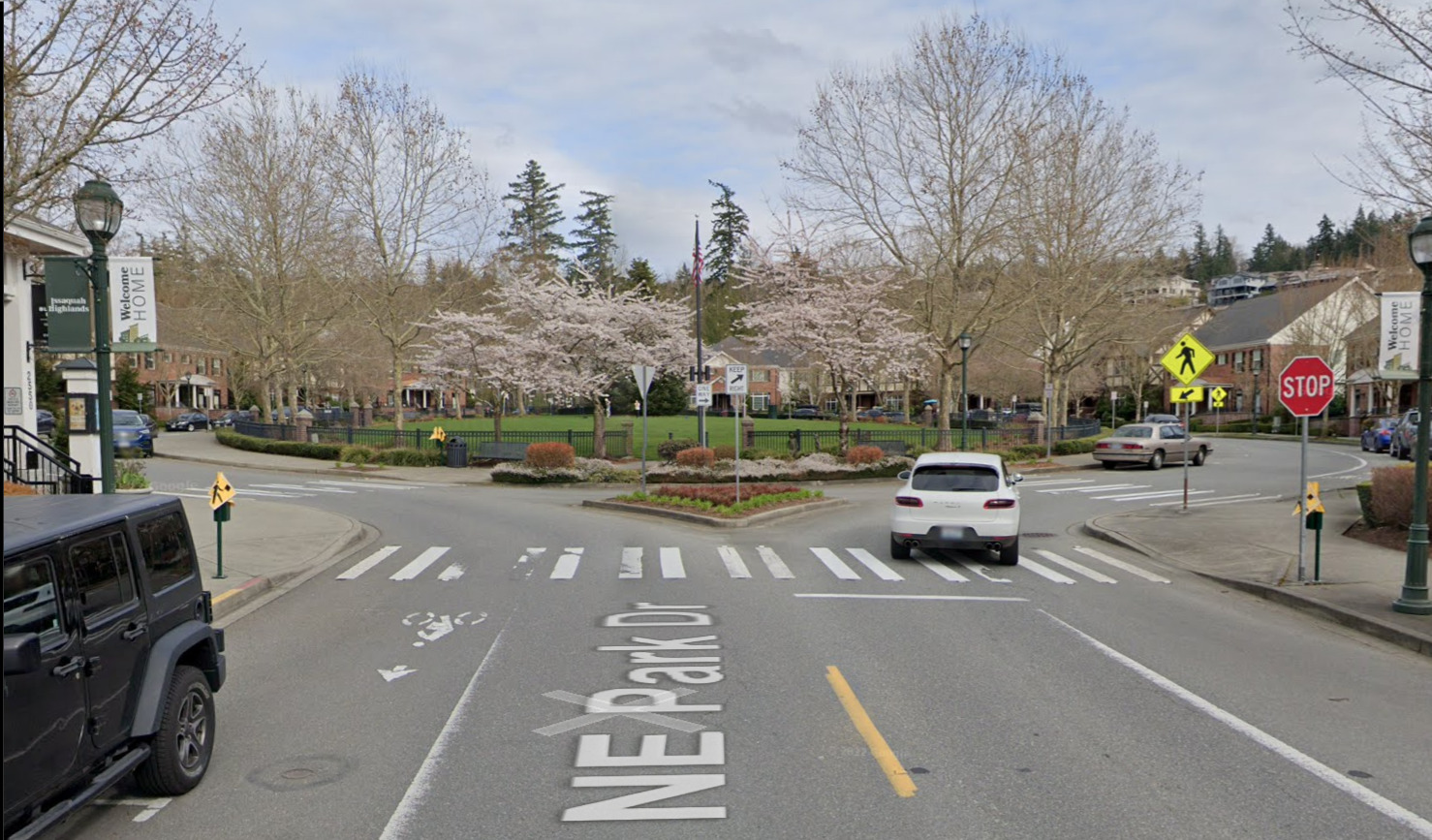(A belated followup to Part 1. Part 3 is here.)
Neighborhood Practice: 25mph streets
Goals:
- Back out of and pull into our driveway.
- Complete point-to-point drives in a gentle environment, build good habits – speed control, scanning, and learning to recognize potential issues.
- Two-way communication with parental unit in right seat. For example, when I say stop, you need to stop right away. Otherwise, I’ll suggest things like “let’s pull over ahead” or “right turn at the next traffic light.” I need you to articulate things you see and actions you’re about to take (e.g., “I see a child on a bicycle weaving; a pedestrian is about to enter the crosswalk, so I will plan on yielding.”). If you don’t do that, I will assume you’re unaware of the issue and will point it out with varying degrees of subtlety.
Locations:
- Klahanie Blvd – This is a wide road with ample shoulder, traffic calming devices, and pedestrian crosswalks. The speed limit is 25mph and visibility is excellent … once you’re off our street.

- Issaquah Highlands – This is an adjacent subdivision connected via a major throughfare. What makes it challenging is serpentine and narrow residential streets. Driving will be slow, and you’ll have to start think about four-way stops, yielding to pedestrians, etc.

Things to learn:
4-way stops, uncontrolled intersections, yielding to pedestrians, crosswalks
Scan and clear intersections. Learn to anticipate:
- Pedestrian about to enter a crosswalk.
- Child on bicycle doing the Picard maneuver (versus the other Picard maneuver).
- Before entering an intersection, ensure conflicting traffic is indeed stopping. Two common scenarios are someone (1) running the light or (2) waiting to make an uncontrolled left turn for the light to turn red — and opposite traffic stops — to finish their turn. You do not want to be entering the intersection until it’s clear.
Maintain appropriate speed without prompting. You’ll have to look for road signs (speed limits, slow turn indicators, and so fort). As we transition to higher speeds, other traffic will assume you to be following the flow. Thus, when making a left turn onto a 35mph road, do not treat it like a left turn in a parking lot that you can take at < 5mph. Similarly, when turning right, you will need to judge whether you have adequate room. Most new drivers will have a tendency to “over-yield” and hesitate so much, the traffic around you does something unproductive.
Maintain center of lane unless obstacles, pedestrians, turns or construction dictate adjusting. There will be times when you unconsciously drift — usually to the right — because that’s where you’re looking. I may gently ask you “where are you focusing?” as a hint. As we do turns, I’ll be looking for unconscious counter-turning.
Scanning and clearing of intersections. You can make use of additional tools like timed crosswalk indicators, pedestrians about to hit the crosswalk button, and so forth.
Safely back around corner. This is a requirement for the driving test. What it’s really after is backing out of a driveway, something you’ll do every trip.
Park on shoulder, re-enter after clearing traffic.
When parking at home, do not run over grass, but stay far enough to the right for dad to back out 😊
